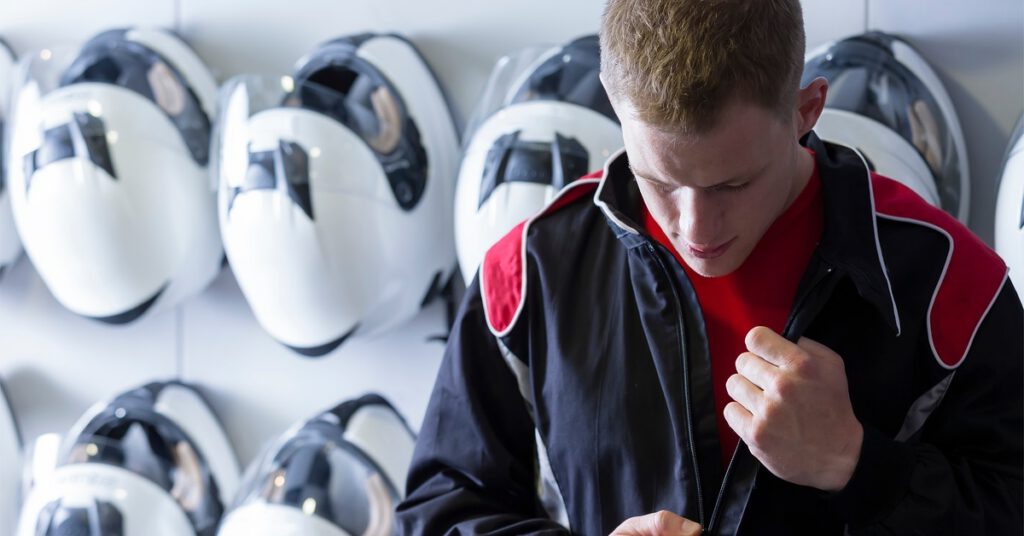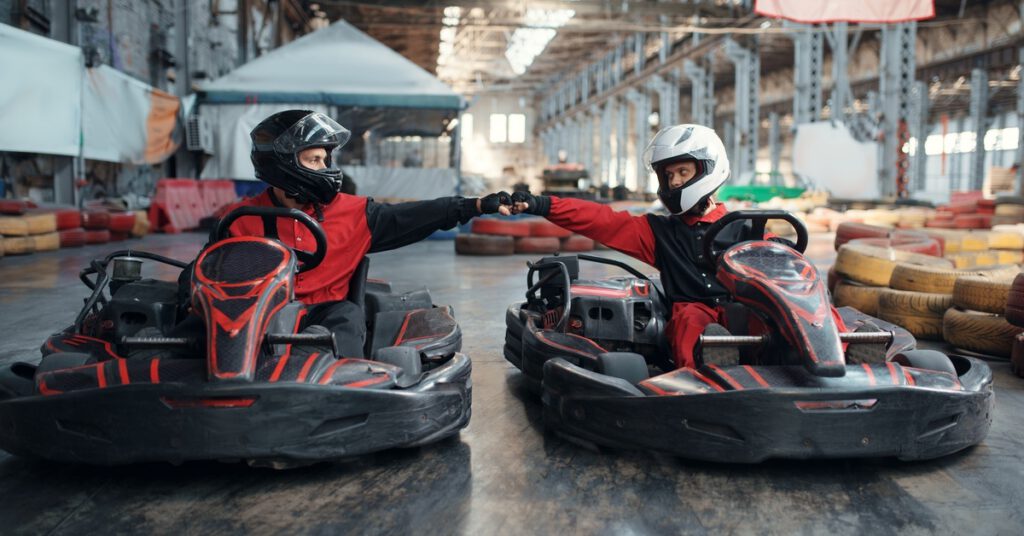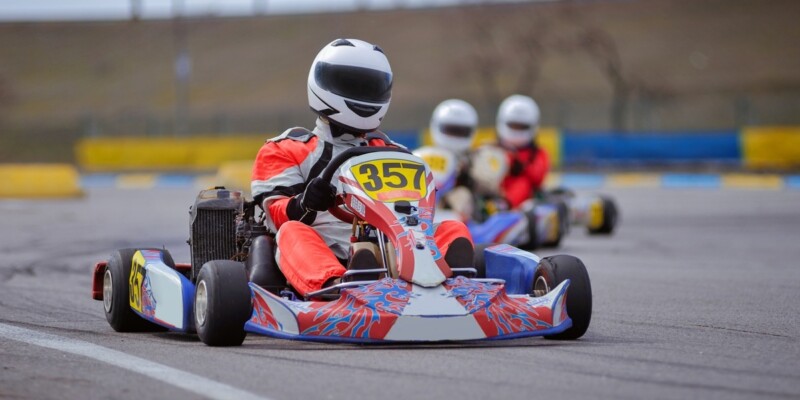There’s no denying the rush of adrenaline you feel as you race around a go-kart track. It’s also hard to match the roar of the engine to everyday life. Therefore, have you ever considered taking this pastime a bit more seriously? If so, competitive go-kart racing isn’t something you should overlook. It might even act as a gateway for some aspiring drivers to enter the world of motorsports.
Competitive karting is a thrilling challenge packed with high-speed fun, whether you dream of becoming a Formula 1 superstar or are just keen to test your skills on the track. However, making the leap to competitive racing requires more than a passion for speed. That’s why we’re here to go over the key steps you should follow to transition to competitive go-kart racing.
Assessing Readiness
Ask yourself, “Am I ready for this?” before plunging into the world of go-kart racing. Competitive go-karting requires more than enthusiasm. It takes skill, physical fitness, and a strong sense of commitment.
You must first evaluate your driving skills to best determine your readiness. Are you comfortable maintaining control at high speeds? Do you have the reflexes to handle sharp turns and unexpected challenges on the track? If not, you might not be ready to make the transition just yet, but you could be on your way to doing so.
Outside of that, you’ll also need to consider your physical fitness. Kart racing might not look like a workout, but it demands strong core muscles and endurance. Drivers can face some significant G-forces during certain turns, and you’ll need to stay sharp and agile throughout the race to keep up with the pack. However, several exercises can help you prepare, such as cardio and strength training.
Finally, you’ll want to assess your level of commitment. Competitive karting requires time for training, races, and maintenance. If you believe you can dedicate your weekends, evenings, and resources to competitive karting, you’re already on the right track.
Equipment Essentials

Once you’re confident in your readiness, it’s time to invest in quality equipment that will give you a competitive edge while keeping you safe. While most items are things you can rent or borrow early on, the more serious you become about this sport, the more you’ll want to start investing in your own gear. Doing so can significantly help you improve your skills.
Let’s start by looking at the go-kart itself. It’s important to know that competitive karts fall into various classes based on engine size, weight, and age category. Research local racing organizations or leagues to understand the class you’d compete in, then choose a kart that fits those requirements. CRG, Tony Kart, and Birel ART brands are popular with seasoned racers. Consider buying a quality second-hand kart to save on costs to save money.
Safety is absolutely essential while on the track, which means investing in quality gear is non-negotiable. Here are the main items you’ll need to buy for yourself:
- A full-face racing helmet that meets safety standards (look for Snell or FIA certification).
- A racing suit made from flame-resistant material to protect you in case of an accident.
- Racing gloves to provide grip and flexible, high-grip shoes to ensure pedal control.
- A neck collar and rib protector reduce strain and safeguard you from hard impacts.
Don’t forget to stock up on essential tools. Spare tires, a tire gauge, wrenches, and lubricants will come in handy during maintenance and race days. Have these items on hand to ensure you’re ready for any quick fixes.
Training and Practice
Now that you have what you need, it’s time to hit the track and sharpen your driving skills. Practice makes perfect, after all! You should start by honing your primary karting techniques, such as braking, cornering, and acceleration. Learn how to approach hairpin turns without losing momentum and how to position yourself to overtake competitors. Many online tutorials and books on racing strategies can help you master these skills.
Spend time practicing at various tracks. Different tracks will throw different challenges your way, from tight turns to longer straights. The more familiar you are with adapting to various layouts, the more prepared you’ll be on race day. Our go-kart race track in Houston is a great place to start if you’re looking for a new place to test your skills.
Be sure to take advantage of data recording systems if possible. A variety of programs and devices are available that can track your lap times, speed, and performance metrics. Reviewing this data will help you identify areas needing improvement.
Don’t forget to focus on mental preparation. Racing is as much a mental game as a physical one. Visualization techniques, staying calm under pressure, and focusing your mind can make a difference in your performance.
Finding a Team or Club

Competitive go-kart racing isn’t something you should try to do entirely on your own. Joining a racing team or club can open up a world of knowledge, guidance, and camaraderie. Look for local karting clubs or racing teams. Many offer programs designed for newcomers, helping you get up to speed with rules, techniques, and race-day procedures. Clubs also provide valuable mentorship from experienced racers who can guide you as you progress.
It’s also worth knowing that being part of a group can give you access to organized track events, where you can practice in a race-like environment. These events often mirror the level of competition you’ll face in official races, making them a fantastic training ground.
Networking is another significant benefit. Connecting with fellow racers and enthusiasts will expose you to insider tips, advice on equipment, and even potential sponsorship opportunities as you gain experience.
First Race Preparation
Once you’ve fully transitioned to competitive go-kart racing, it’s time to start racing. However, it’s good to know what to expect. So, you’ll want to check off a few boxes before stepping into the cockpit to ensure a smooth experience.
Most importantly, you’ll want to ensure you have the proper licensing and registration for the event. Many competitive races require you to hold a karting license issued by a recognized authority, such as the FIA or your local motorsport association.
Arrive early to complete pre-race checks. Inspect your kart for any mechanical issues, double-check your gear, and ensure you have fuel, tires, and tools ready to go. Don’t forget to review the regulations of your specific racing class. Understanding race format, flags, and penalties will keep you competitive and compliant.
Above all else, treat this as a learning experience. The nerves and excitement of your first race are unforgettable, but don’t put too much pressure on yourself. Focus on implementing what you’ve learned during practice, observing your competition, and enjoying the race. With enough time and practice, you’ll find ways to build confidence and move up the leaderboard with ease.


